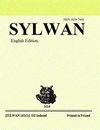肉类中脂肪酸的综合水平:对人体健康的影响
IF 0.5
4区 农林科学
Q4 FORESTRY
引用次数: 0
摘要
有强有力的指标表明,饮食与肥胖、心血管疾病、糖尿病和某些癌症的负担增加之间存在联系。健康的饮食模式被定义为多吃水果、蔬菜和脱脂乳制品(低饱和脂肪和反式脂肪)的饮食。本研究的目的是确定肉类(家禽、猪肉、羊肉和牛肉)的脂肪酸(FA)分布,并计算出动脉粥样硬化指数(AI)和血栓形成指数(TI)。家禽、猪肉和羊肉的单不饱和脂肪酸(MUFAs)含量高于饱和脂肪酸(SFAs)。线性判别分析(LDA)表明,第一个判别解释总方差的56.11%,第二个判别解释总方差的23.85%。Wilks检验的p值为p <0.0001. 通过典型相关,建立了LDA的第一判别函数为0.995,第二判别函数为0.995。先前建议AI和TI值分别小于0.5和1.0。家禽的AI值(0.37 ~ 0.45)低于猪肉(0.50 ~ 0.53)、羊肉(0.54)和牛肉(0.93)。禽类TI值(0.81 ~ 0.87)也低于猪肉(1.09 ~ 1.18)、羊肉(1.44)和牛肉(1.93)。有益的营养习惯,即根据食物金字塔和地中海饮食进行营养,应能降低冠心病的发病率,并为消费者带来更好的健康结果。本文章由计算机程序翻译,如有差异,请以英文原文为准。
Comprehensive levels of fatty acids in meat: implications for human health
There are strong indicators of the link between diets and increased burdens of obesity, cardiovascular diseases, diabetes and some cancers. Healthy dietary patterns were defined as diets that are high in fruits, vegetables and non-fat dairy (low in saturated and trans fats). The aims of this study were to determine the fatty acid (FA) profile of meat (poultry, pork, lamb and beef) and the calculated atherogenic index (AI) and thrombogenic index (TI). Poultry, pork and lamb contained more monounsaturated fatty acids (MUFAs) than saturated fatty acids (SFAs). Linear discriminant analysis (LDA) demonstrated that the first discriminant explained 56.11% of the total variance and the second discriminant explained 23.85% of the total variance. The established p value of Wilks\' test was p < 0.0001. By canonical correlation, the first and the second discriminant functions in the LDA were established as 0.995 and 0.995, respectively. AI and TI values of less than 0.5 and 1.0, respectively, were previously advised. The obtained AI values in poultry (0.37-0.45) were lower than those in pork (0.50-0.53), lamb (0.54) and beef (0.93) meats. The obtained TI values in poultry (0.81-0.87) were also lower than in pork (1.09-1.18), lamb (1.44) and beef (1.93) meats. Beneficial nutrition habits, i.e., nutrition according to the food pyramid and a Mediterranean diet, should reduce the rate of coronary heart disease and result in better health outcomes for consumers.
求助全文
通过发布文献求助,成功后即可免费获取论文全文。
去求助
来源期刊

Sylwan
农林科学-林学
CiteScore
0.70
自引率
16.70%
发文量
0
审稿时长
1 months
期刊介绍:
SYLWAN jest najstarszym w Polsce leśnym czasopismem naukowym, jednym z pierwszych na świecie. Został założony w 1820 roku w Warszawie. Przyczynił się w znakomity sposób do rozwoju polskiego leśnictwa, służąc postępowi, upowszechnieniu wiedzy leśnej oraz rozwojowi nauki.
 求助内容:
求助内容: 应助结果提醒方式:
应助结果提醒方式:


